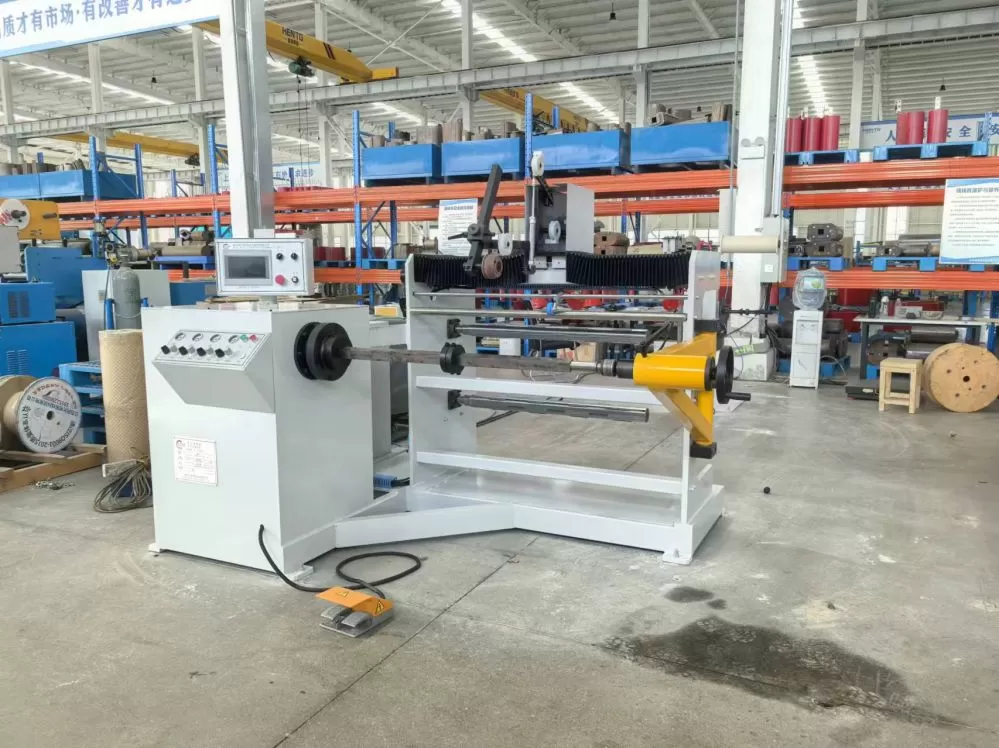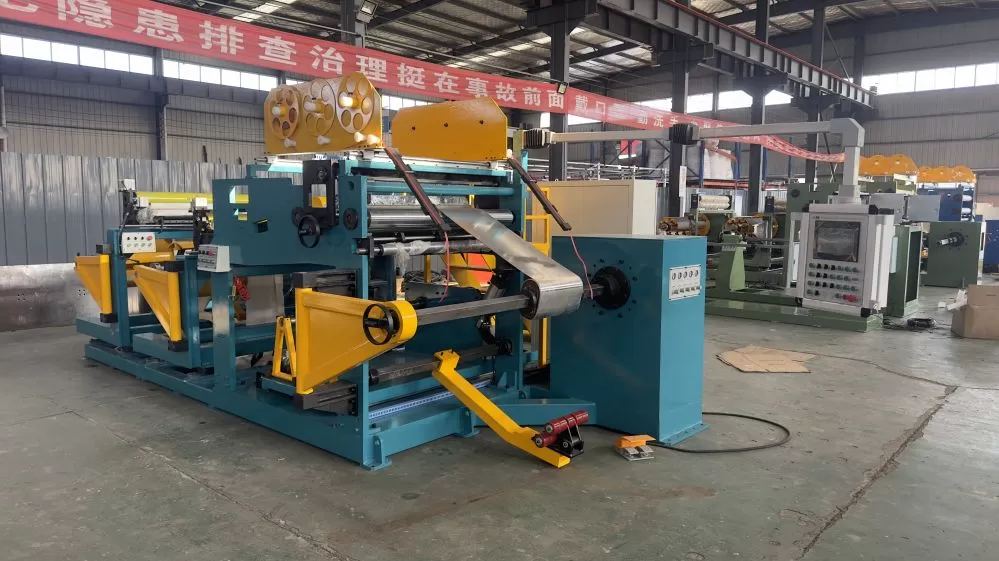Press Machine Industry Insights & Trends: Unveiling the Future of Manufacturing Efficiency
Introduction to the Press Machine Industry: A Backbone of Modern Manufacturing

In today's highly automated and digitally-driven manufacturing landscape, press machines hold a crucial role. From automotive and aerospace to electronics and construction, nearly every major industry relies on press machines for efficient and high-precision forming, molding, stamping, and pressing processes. As industrial demands evolve, so too does the press machine industry, blending advancements in technology with a keen focus on sustainability and efficiency. This article will explore how press machines are shaping modern manufacturing, the innovative trends currently influencing the industry, and the strategies businesses are adopting to remain competitive.
The Current Landscape of the Press Machine Industry
The press machine industry has grown substantially in recent years, driven by increasing global demand for customized, high-quality manufactured products. At its core, a press machine is designed to alter the shape of materials, often metal or composite materials, with the application of pressure. Common press machine types include hydraulic, mechanical, pneumatic, and servo presses, each with specific benefits depending on the manufacturing requirements.
Hydraulic Presses: Known for high versatility, hydraulic presses offer unmatched force, making them ideal for deep drawing, stamping, and molding applications. With their ability to exert continuous force, they are extensively used across sectors like automotive, where precision and strength are paramount.
Mechanical Presses: These presses use mechanical systems to generate force and are favored for high-speed production needs, such as in stamping operations for automotive and consumer electronics parts. Mechanical presses are often employed in large-scale manufacturing, valued for their speed and high repeatability.
Pneumatic Presses: Pneumatic presses utilize compressed air to generate force, offering lower force levels but are highly energy-efficient and suitable for small-to-medium production volumes. They are often chosen in industries where gentler pressing processes are needed.
Servo Presses: Servo presses integrate electronic servo motors, providing exceptional control over the speed, position, and pressure of each press cycle. This precision has made servo presses popular in fields where customization and fine-tuned pressure control are necessary, such as in medical device manufacturing.
Emerging Trends in Press Machine Industry
The press machine industry is currently shaped by multiple forces of change, from digital transformation to environmental responsibility. Here are some of the most significant trends reshaping the field:
Automation and Industry 4.0: Automation technologies, like robotics and AI, are fundamentally changing how press machines are operated. With the rise of Industry 4.0, manufacturers are integrating smart sensors, data analytics, and interconnected systems that communicate seamlessly across the production line. This results in improved quality control, reduced downtime, and a safer working environment for operators. For example, predictive maintenance powered by IoT devices can foresee potential machine failures before they disrupt production, minimizing downtime and costly repairs.
Green Manufacturing: As environmental concerns become a top priority, manufacturers are seeking greener alternatives within the press machine industry. This trend, known as "green manufacturing," includes optimizing press machine efficiency to reduce power consumption, minimizing waste through precision forming, and using eco-friendly materials. Sustainable practices also include retrofitting older machines to meet current emission standards, which helps in reducing the industry’s overall carbon footprint.
High-Strength Materials and Lightweighting: The demand for durable yet lightweight materials, particularly in the automotive and aerospace industries, has led to advancements in press machine capabilities. Manufacturers are developing press machines that can work with high-strength, lightweight materials like aluminum alloys, carbon fiber, and advanced composites. These materials help reduce vehicle weight, improve fuel efficiency, and lower emissions, meeting both industry and regulatory demands.
Customizable and Flexible Press Machines: Modern manufacturers are increasingly moving toward flexible manufacturing systems, allowing for customizable press machines that can easily adjust to different specifications. This flexibility is critical for businesses producing a wide array of products and for industries focused on rapid prototyping or short-run production. Servo press technology is a prime example, as it provides operators with adjustable force and speed controls, enabling easy adaptation to diverse manufacturing requirements.
Safety Enhancements: Safety in the workplace is paramount, and press machines, with their heavy-duty nature, present specific safety challenges. Modern press machines now come equipped with enhanced safety features, such as advanced guarding, emergency stop systems, and sensor-driven technology that can detect obstructions. Furthermore, remote monitoring allows operators to oversee the machinery without direct physical engagement, reducing risk in high-pressure work environments.
Technological Innovations Driving the Future of Press Machines
With the advent of digital transformation, traditional manufacturing processes are evolving at an unprecedented pace. Press machine technology is no exception, as new innovations promise to redefine efficiency, precision, and operational control. Here are some technological breakthroughs that are positioning press machines for the future:
Digital Twin Technology: Digital twins, virtual replicas of physical systems, are finding their way into the press machine industry. By creating a digital twin of a press machine, manufacturers can simulate performance, anticipate issues, and optimize operations before any physical adjustments are made. This leads to reduced trial-and-error, minimal downtime, and better overall machine performance.
Advanced Control Systems: The integration of AI and machine learning in press machine control systems offers real-time process optimization and anomaly detection. By analyzing data from previous press cycles, AI-powered systems can suggest adjustments to optimize force application and reduce wear on machine parts. Such adaptive control systems are essential for maintaining high productivity and minimizing errors, especially in high-precision applications.
Augmented Reality (AR) for Maintenance and Training: The press machine industry is also tapping into AR technology, which allows technicians to visualize machine components and access real-time maintenance guidance. AR headsets can display step-by-step instructions, provide part specifications, and even link to remote support when complex issues arise. This technology also aids in operator training, ensuring safer and more effective handling of press machines.
Energy-Efficient Drives and Components: Sustainability remains a top priority, and press machines are increasingly designed with energy-efficient drives, such as variable frequency drives (VFDs). These drives reduce power consumption by adjusting motor speed based on the pressing requirements. Coupled with lightweight components and advanced cooling systems, these energy-efficient machines not only lower operational costs but also support manufacturers’ green initiatives.
Multi-Functionality and Hybrid Machines: The trend toward multifunctional press machines is gaining traction, where machines can perform multiple processes in one setup, such as stamping and bending. Hybrid press machines that combine hydraulic, mechanical, and servo functions are becoming more popular, as they offer the versatility needed for complex operations. These hybrid solutions reduce the need for separate machines, saving both floor space and operational costs.
The Economic Impact and Future Outlook
As industries globally invest in advanced manufacturing technologies, the demand for cutting-edge press machines is set to rise. However, manufacturers and business leaders must consider the initial investment and long-term economic impact of transitioning to more advanced press systems. Automated and technologically enhanced press machines come with significant upfront costs but can provide returns through higher productivity, reduced downtime, and better energy efficiency.
Cost-Benefit Analysis: Companies are increasingly evaluating the cost-to-benefit ratio when adopting new press machines. While automation and smart press technology have proven beneficial in reducing production errors and increasing yield, decision-makers must weigh these gains against the cost of machinery, installation, and training. Financing options, subsidies, and government incentives are often essential factors that influence purchasing decisions, especially for small and medium-sized manufacturers.
The Role of Skilled Labor: Despite advancements in automation, skilled operators remain a vital part of the press machine industry. Skilled technicians and operators who can manage advanced press technology, interpret data insights, and perform complex maintenance are in high demand. Many manufacturers are investing in training programs and partnerships with educational institutions to build a workforce capable of supporting these technologically advanced systems.
Global Competition and Market Growth: As the press machine industry continues to grow, competition between major manufacturers in regions like North America, Europe, and Asia is intensifying. Asia, particularly China, is witnessing rapid growth due to expanding industrial sectors and lower production costs, while Europe and North America lead in technological innovations and sustainability standards. Global competition drives innovation, as companies strive to deliver high-quality, cost-effective solutions to meet diverse market demands.
Sustainability Goals and Regulatory Compliance: Environmental regulations are prompting manufacturers to adopt cleaner, greener production methods, including energy-efficient press machines. In regions where sustainability goals are stringent, companies are more likely to invest in green technology, which often translates into long-term savings and improved brand reputation.
Conclusion: A Forward-Looking Industry
The press machine industry stands at the intersection of tradition and innovation, blending time-tested mechanical principles with cutting-edge technology to meet evolving industrial needs. The integration of digital solutions, automation, and sustainability measures will define the industry's future, empowering manufacturers to enhance productivity, reduce waste, and meet environmental standards. As more companies invest in advanced press machine technology, they set a new standard for quality and efficiency in global manufacturing.
This concludes the two-part exploration of the press machine industry's trends and innovations. With a promising outlook on technology adoption and sustainable practices, the industry is poised for a future that supports both economic growth and environmental responsibility.
英雄不问出处,文章要问来源于何处。
提示:在享受本文内容的同时,请注意版权归属 徐州鑫坤机电设备有限公司https://www.xzxkjd.com如果您觉得有价值欢迎分享,但请务必注明出处,感谢您的理解,谢谢!
以下部分内容需要登录查看 立即登录
相关内容
- 供需裂口持续扩大:2025年铜价暴涨,产业链如何应对?
- 铜,新时代的“石油”?2025年价格狂飙背后的战略博弈
- 从能源革命到智能时代:2025铜价暴涨背后的全球新逻辑
- 铜价创历史新高!绿色转型与供需失衡背后的财富浪潮
- 2025铜价为何一飞冲天?三大核心驱动力深度解析
- 上海非急救出租服务全解析
- 深耕中考复读赛道 深圳深才教育为复读生搭建升学桥梁
- 阳光下的童年:那些被温暖照亮的纯真时光
- 群晖DSM7.0-7.21监控套件Surveillance Station 9.20-11289开心版60个许可证设置教程(无重启、无断流、无卡死、史上最完美)
- 云服务器+SD-WAN组网和域名DNS解析
- 在云主机上安装iKuai OS,实现SD-WAN组网,利用云主机80;443端口搭建企业网站。个人博客。让云主机当做你的堡垒机,实现数据本地化。
- 中央空调只开一台=全开耗电?真相让人意外!
 简体中文
简体中文 繁體中文
繁體中文 English
English Nederlands
Nederlands Français
Français Русский язык
Русский язык Polski
Polski 日本語
日本語 ภาษาไทย
ภาษาไทย Deutsch
Deutsch Português
Português español
español Italiano
Italiano 한어
한어 Suomalainen
Suomalainen Gaeilge
Gaeilge dansk
dansk Tiếng Việt
Tiếng Việt Pilipino
Pilipino Ελληνικά
Ελληνικά Maori
Maori tongan
tongan ᐃᓄᒃᑎᑐᑦ
ᐃᓄᒃᑎᑐᑦ ଓଡିଆ
ଓଡିଆ Malagasy
Malagasy Norge
Norge bosanski
bosanski नेपालीName
नेपालीName čeština
čeština فارسی
فارسی हिंदी
हिंदी Kiswahili
Kiswahili ÍslandName
ÍslandName ગુજરાતી
ગુજરાતી Slovenská
Slovenská היברית
היברית ಕನ್ನಡ್Name
ಕನ್ನಡ್Name Magyar
Magyar தாமில்
தாமில் بالعربية
بالعربية বাংলা
বাংলা Azərbaycan
Azərbaycan lifiava
lifiava IndonesiaName
IndonesiaName Lietuva
Lietuva Malti
Malti català
català latviešu
latviešu УкраїнськаName
УкраїнськаName Cymraeg
Cymraeg ກະຣຸນາ
ກະຣຸນາ తెలుగుQFontDatabase
తెలుగుQFontDatabase Română
Română Kreyòl ayisyen
Kreyòl ayisyen Svenska
Svenska հայերեն
հայերեն ဗာရမ်
ဗာရမ် پښتوName
پښتوName Kurdî
Kurdî Türkçe
Türkçe български
български Malay
Malay मराठीName
मराठीName eesti keel
eesti keel മലമാലം
മലമാലം slovenščina
slovenščina اوردو
اوردو አማርኛ
አማርኛ ਪੰਜਾਬੀName
ਪੰਜਾਬੀName albanian
albanian Hrvatski
Hrvatski Suid-Afrikaanse Dutch taal
Suid-Afrikaanse Dutch taal ខ្មែរKCharselect unicode block name
ខ្មែរKCharselect unicode block name




